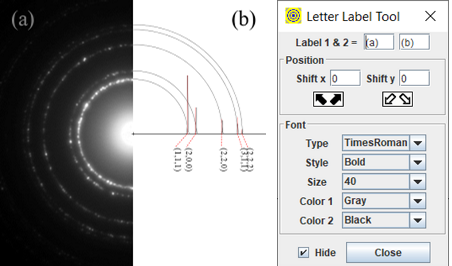
For polycrystalline or powder Transmission Electron Microscopy (TEM) specimens, electron diffraction ring patterns are widely employed for phase identification, where each diffraction pattern serves as a unique fingerprint for a known phase. The first version of PolyCrystalline Electron Diffraction was developed in 2004 to address these needs. Subsequent versions, such as ProJECT/PCED2, introduced in 2010 new features including Blackman’s theory for intensity calculation, models for out-of-plane and in-plane texture matching, pseudo-Voigt functions for diffraction ring profiles, and improvements in pattern indexing and matching with experimental data. PCED2 integrated with the Landyne launcher and ProJECT package, offering enhanced user interface and input/output capabilities compared to its predecessor. PCED3 introduced drag-and-drop functionality and enhanced image operations such as inversion, alignment, resizing, and rotation. PCED4 expanded capabilities to simulate two crystalline phases and implemented an indexing system for phase identification. The current version, PCED6, further enhances manipulation of experimental electron diffraction patterns and improves indexing labels on simulated patterns. It includes tools for labeling and preparing figures for publication, significantly enhancing ease of use, especially for phase identification tasks. The software is implemented in openJDK and optimized for performance, including code obfuscation for security. |

The experimental diffraction ring pattern and simulation. Snap-shot of output as published-ready image (left) and a tool for figure label (right).